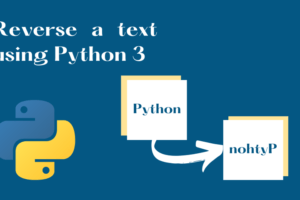
Getting Started with Python 3: A Beginner’s Guide
Python is a popular programming language used by developers around the world. If you’re interested in learning Python 3, you’re in the right place! This article will provide an overview of how to get started with Python 3 and explain the above-mentioned blog titles.
Python is a versatile programming language that can be used in a variety of fields and industries. Here are some different use cases of Python:
- Web Development: Python has become a popular language for web development, thanks to frameworks such as Django and Flask.
- Data Science: Python is widely used in data science and machine learning due to its excellent libraries such as NumPy, Pandas, and Scikit-learn.
- Artificial Intelligence: Python is widely used in AI applications because it is easy to read, has a simple syntax, and is a high-level language.
- Game Development: Python is increasingly used in game development, thanks to the Pygame library.
- Robotics: Python is used to program robots due to its ease of use and simplicity.
- Finance: Python is widely used in finance for tasks such as risk analysis, algorithmic trading, and financial modeling.
- Education: Python is a popular language for teaching programming to beginners because of its easy-to-read syntax and versatility.
- System Administration: Python is used for system administration tasks, such as automating system processes and server maintenance.
- Desktop Applications: Python can be used to create desktop applications, thanks to libraries such as PyQT and PyGTK.
- Internet of Things (IoT): Python is widely used in the development of IoT projects, thanks to its versatility and ease of use.
Overall, Python’s versatility and ease of use have made it a popular language across many fields and industries, and it continues to be a go-to choice for many developers and businesses.
Getting Started with Python 3
To get started with Python 3, you’ll need to install Python on your computer. You can download Python 3 from the official website (https://www.python.org/downloads/). Once you have installed Python 3, you can start learning the language.
We are going to cover different topic step by step in different blog posts. Here’s a brief explanation of what will be covered in each blog post:
1. Basic data types and variables in Python
This blog topic covers the fundamental data types in Python 3, including strings, numbers, and boolean values, and how to use them in your programs. You’ll also learn about variables and how to assign and manipulate values in Python 3.
2. Control flow structures in Python
In this topic, you’ll learn about the control flow structures in Python, including if statements, for loops, and while loops. You’ll also learn how to use these structures to make decisions and repeat actions in your programs.
3. Functions and modules in Python
Functions are an essential part of programming, and this topic covers how to define and use functions in Python 3. You’ll also learn about modules and how to use external libraries to enhance your Python programs.
4. Working with files and directories in Python
This topic covers how to read and write files in Python 3, including how to open, close, and manipulate files. You’ll also learn about directories and how to navigate and create them in Python 3.
5. Object-oriented programming in Python
Python 3 is an object-oriented programming language, and this topic covers the basics of object-oriented programming, including classes, objects, and inheritance. You’ll learn how to define classes and create objects in Python 3.
6. Debugging and error handling in Python
Debugging is an essential part of programming, and this topic covers how to use Python’s built-in debugging tools to find and fix errors in your programs. You’ll also learn about error handling and how to use try/except blocks to handle exceptions in your programs.
7. Advanced data structures in Python
In this topic, you’ll learn about advanced data structures in Python, including sets, dictionaries, and tuples. You’ll also learn how to use these data structures to perform complex operations in your programs.
8. Using external libraries and modules in Python
Python has a vast ecosystem of external libraries and modules that you can use to enhance your programs. This topic covers how to use external libraries and modules in your Python programs and how to install and manage them.
9. Developing web applications with Python and Flask
Python is a popular language for web development, and this topic covers how to develop web applications with Python and the Flask web framework. You’ll learn how to create routes, handle requests, and interact with databases in your web applications.
10. Advanced topics in Python
Finally, this topic covers advanced topics in Python, including decorators, generators, and async programming. You’ll learn how to use these advanced features to make your Python programs more efficient and powerful.
Conclusion
Python 3 is an excellent programming language to learn, and there’s no shortage of resources available to help you get started. Whether you’re a beginner or an experienced programmer, there’s always something new to learn with Python 3. We hope this article has provided you with a helpful overview of how to get started with Python 3 and what topics to explore next.

